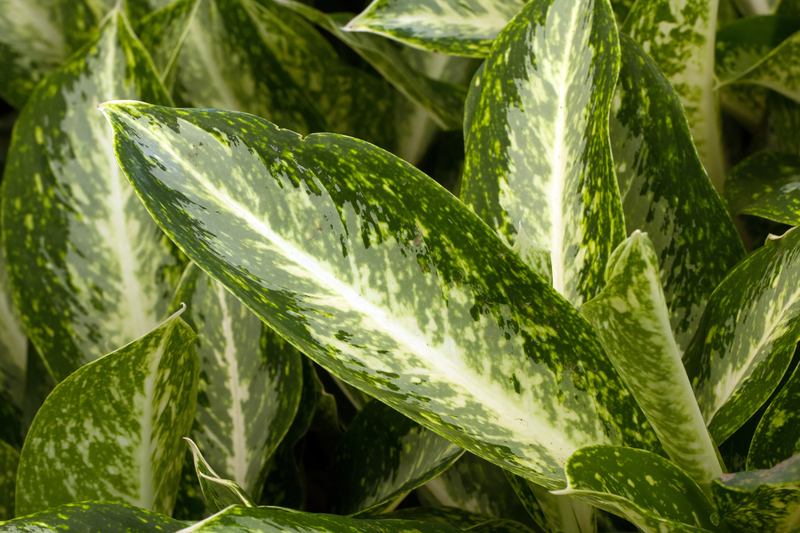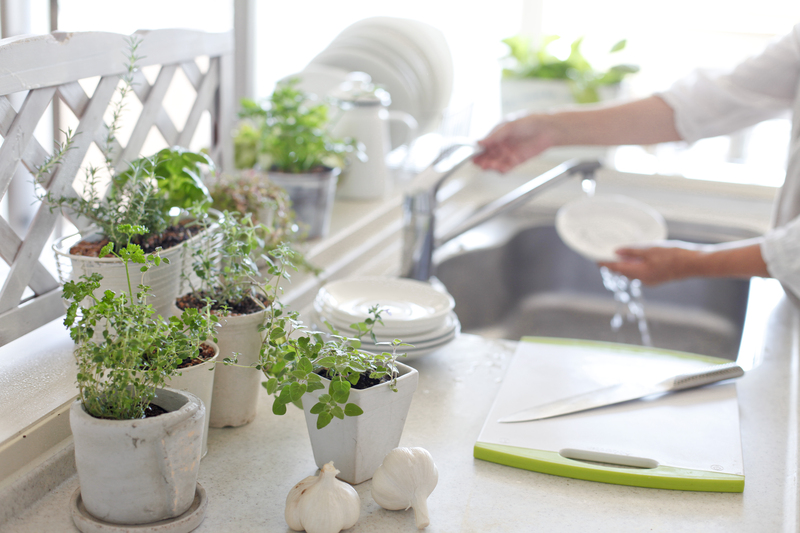Crafting a Mobile Garden With These 3 Easy Strategies
Are you dreaming of a vibrant green garden but limited by space, a nomadic lifestyle, or just seeking more flexibility? Discover how crafting a mobile garden with these three easy strategies can turn any spot--be it a balcony, patio, or even a compact urban corner--into your personal patch of nature. This comprehensive guide unveils actionable techniques, tips, and expert insights that will help you design, assemble, and maintain your versatile, portable garden space. Whether you're a city dweller, an RV traveler, or simply want to rearrange your outdoor decor with the seasons, this article will inspire and empower you to create your own thriving mobile garden oasis.
Why Choose a Mobile Garden?
Gone are the days when gardens were rooted only in backyards. In today's fast-paced, urban-centric world, mobile gardens offer a dynamic solution for anyone constrained by space or constantly on the move. Here's why you should consider creating a mobile garden:
- Flexibility: Move your garden to take advantage of sunlight, weather protection, or creative design updates.
- Space Efficiency: Ideal for small apartments, balconies, tiny homes, and mobile living.
- Accessibility: Perfect for renters or those who cannot plant directly in the ground.
- Year-Round Enjoyment: Easily protect your plants by moving them indoors during harsh seasons.
- Aesthetic Appeal: Enhance living spaces with vivid greenery wherever you roam.
Let's dive into three simple yet powerful strategies for crafting your own mobile garden.

Strategy 1: Go Portable With Container Gardening
Why Containers Make the Perfect Mobile Garden Solution
Container gardening is the cornerstone of mobile gardening. By using pots, tubs, window boxes, and even repurposed containers, you can cultivate a variety of plants without being tied to a single spot. This method makes your garden easy to relocate, redesign, and adapt to changing environments. Here's how to maximize your results:
Choosing the Right Containers
- Material Matters: Lightweight options like plastic or resin are easier to move, while clay and ceramic offer durability and insulation.
- Drainage: Ensure every pot has drainage holes to prevent root rot and promote healthy growth.
- Size Selection: Select appropriate container sizes for your plants' root systems. Deep containers are best for vegetables, while shallow ones suit herbs and flowers.
Plant Selection for Container Gardens
- Herbs: Basil, thyme, parsley, and mint thrive in containers and are useful for cooking.
- Vegetables: Tomatoes, peppers, lettuce, and radishes can flourish in the right-sized pots.
- Flowers: Marigolds, pansies, and petunias bring color and life to any portable arrangement.
Design Tips For Eye-Catching Containers
- Mix heights and colors for visual interest--combine tall, mid-sized, and trailing plants in the same pot.
- Group containers in odd numbers for a more natural look.
- Add wheels or caddies for true mobility, especially for heavier pots.
Expert Tip: Consider self-watering containers to minimize maintenance and ensure consistent hydration during summer or busy periods.
Strategy 2: Use Raised Beds on Wheels or Caster-Based Platforms
Upgrade With Mobile Raised Garden Beds
For gardeners who desire more planting space and versatility, raised beds on wheels are a transformative solution. Ideal for patios, large balconies, or paved courtyards, these movable garden beds combine the volume and soil health benefits of traditional raised beds with unprecedented mobility.
How to Build or Choose a Mobile Raised Bed
- Sturdy Construction: Wood, metal, or composite beds are most durable. Ensure the base is reinforced for stability while moving.
- Wheels/Casters: Heavy-duty, lockable wheels are crucial to maintain safety and ease of movement.
- Height Considerations: Elevated beds are more accessible and protect plants from pests and ground-level temperature fluctuation.
- Drainage: Like container gardens, be sure your raised beds provide proper drainage to prevent waterlogging.
Getting the Most Out of Your Mobile Raised Beds
- Rotate crops by moving beds to optimize sun exposure during different times of year or to prevent plant disease cycles.
- Protect from Weather: Move to sheltered locations during heavy rain, wind, or harsh heat.
- Change Layouts: Rearrange your garden's appearance and function, or even create thematic beds for different herbs, flowers, or edibles.
Maintenance Tip: Regularly check and tighten any hardware on your rolling beds to keep them safe and smooth-moving.
Strategy 3: Embrace Vertical Gardening For Ultimate Mobility
Benefits of a Vertical Mobile Garden
Space-saving, visually stunning, and incredibly versatile, vertical gardens are perfect for mobile gardening in compact spaces. Whether hung from balcony railings, walls, or freestanding frames with wheels, they transform any blank space into a lush, plant-filled feature.
Types of Mobile Vertical Gardens
- Hanging Planters: Use lightweight, easy-to-move hooks and planters to create living walls on balconies or fences.
- Freestanding Racks: Rolling shelves or racks let you reposition your vertical garden with minimal effort.
- Pocket Planters: Fabric or felt pocket-style planters are ideal for herbs, succulents, and small blooms.
- Pallet Gardens: Repurpose wood pallets into vertical plant displays on caddies or small wheels for extra charm.
Design Inspiration and Plant Suggestions
- Trailing Plants: String of pearls, ivy, or sweet potato vine for cascading greenery.
- Compact Herbs/Greens: Lettuce, spinach, oregano, and chives work well in pocket gardens.
- Colorful Blooms: Petunias, nasturtiums, or pansies in higher pockets give your mobile vertical garden a cheerful look.
Pro Tip: Use lightweight potting mix and regular fertilization, as vertical setups tend to dry out faster than ground-planted gardens.
Key Considerations for All Mobile Garden Designs
Crafting a mobile garden isn't just about portability; it involves thoughtful planning for the best results. Here's what every aspiring mobile gardener should keep in mind:
1. Sunlight and Microclimates
- Track how sunlight moves over your space throughout the day and reposition your garden accordingly for optimal photosynthesis.
- Use mobility to protect sensitive plants from harsh afternoon sun or intense wind by shifting them as needed.
2. Watering and Fertilizing
- Mobile gardens may dry out faster due to increased air exposure. Check moisture levels regularly and adjust your watering schedule.
- Use liquid fertilizers or slow-release pellets to keep nutrients in the limited soil volume refreshed.
3. Weight and Accessibility
- Keep the total weight manageable for easy relocation, especially in vertical and raised bed gardens.
- Consider accessibility for all ages and abilities--elevated or mobile beds are perfect for those with mobility challenges.
4. Pest Management
- Mobile gardens allow you to move plants away from common pests, or group vulnerable varieties together to monitor and treat more efficiently.
- Regularly inspect your garden to catch any issues early, and enjoy the natural advantage of being able to distance your plants from larger pest-infested zones.
Creative Mobile Garden Ideas For Every Space
Looking for inspiration? Here are some trending concepts for mobile garden design:
- Urban Balcony Oasis: Rolling racks with herbs, salad greens, and edible flowers for healthy city living.
- Traveling Vegetable Patch: Container gardens in an RV or camper, moved outdoors when parked or placed on a picnic table near your campsite.
- Mobile Pollinator Paradise: Movable pots and beds with nectar-rich flowers to attract bees and butterflies to any sunny spot.
- Seasonal Shifting: Move citrus trees or tropical plants indoors for winter, then back outside for summer for year-round enjoyment.
Getting Started: A Step-by-Step Mobile Garden Plan
Transform your vision into reality with this actionable plan:
- Assess Your Space: Measure available areas and identify suitable locations for your containers, beds, or vertical setups.
- Set Goals: Decide what you wish to grow--herbs, flowers, veggies, or a mix?
- Choose Your Strategy: Select one or more of the mobile gardening methods described above.
- Source Materials: Buy or repurpose containers, beds, racks, soil, and suitable plants.
- Arrange and Plant: Position your garden where it will thrive initially, fill with premium soil, then plant your selections.
- Monitor and Adjust: Move your mobile garden as needed, monitor growth, and enjoy the flexibility and beauty it brings!
Eco-Friendly Mobile Gardening Tips
- Repurpose and Upcycle: Use old buckets, crates, or even drawers as planters for unique appeal.
- Compost on a Small Scale: Add kitchen scraps to your containers to feed plants and cut waste.
- Go Organic: Use peat-free soil, organic fertilizers, and natural pest treatments.
- Harvest Rainwater: Collect water for irrigation to make your mobile garden more sustainable.

Common Challenges and How to Overcome Them
Mobile gardens offer freedom and flexibility, but may present unique challenges. Here's how to tackle the most common issues:
- Too Much/Too Little Water: Self-watering planters and checking soil regularly helps avoid extremes.
- Sun Scald: Move sensitive plants into shade during heatwaves.
- Wind Damage: Place heavier pots at the base of vertical gardens or near railings to anchor them.
- Pest Infestations: Group similar plants, monitor closely, and respond quickly with organic treatments.
- Root Bound Plants: Repot into larger containers as they grow, or divide congested root masses when necessary.
Conclusion: Enjoy the Freedom of a Mobile Garden
Crafting a mobile garden with these 3 easy strategies opens new opportunities for greenery, creativity, and joy--no matter where you live or how often you move. By using portable containers, mobile raised beds, and vertical gardens, you'll discover that flexibility and beauty go hand-in-hand. Whether you want a kitchen herb garden or an ever-changing floral display, the techniques and tips above will set your mobile gardening adventure in motion.
Start small, dream big, and let your imagination take root--your perfect portable garden awaits!